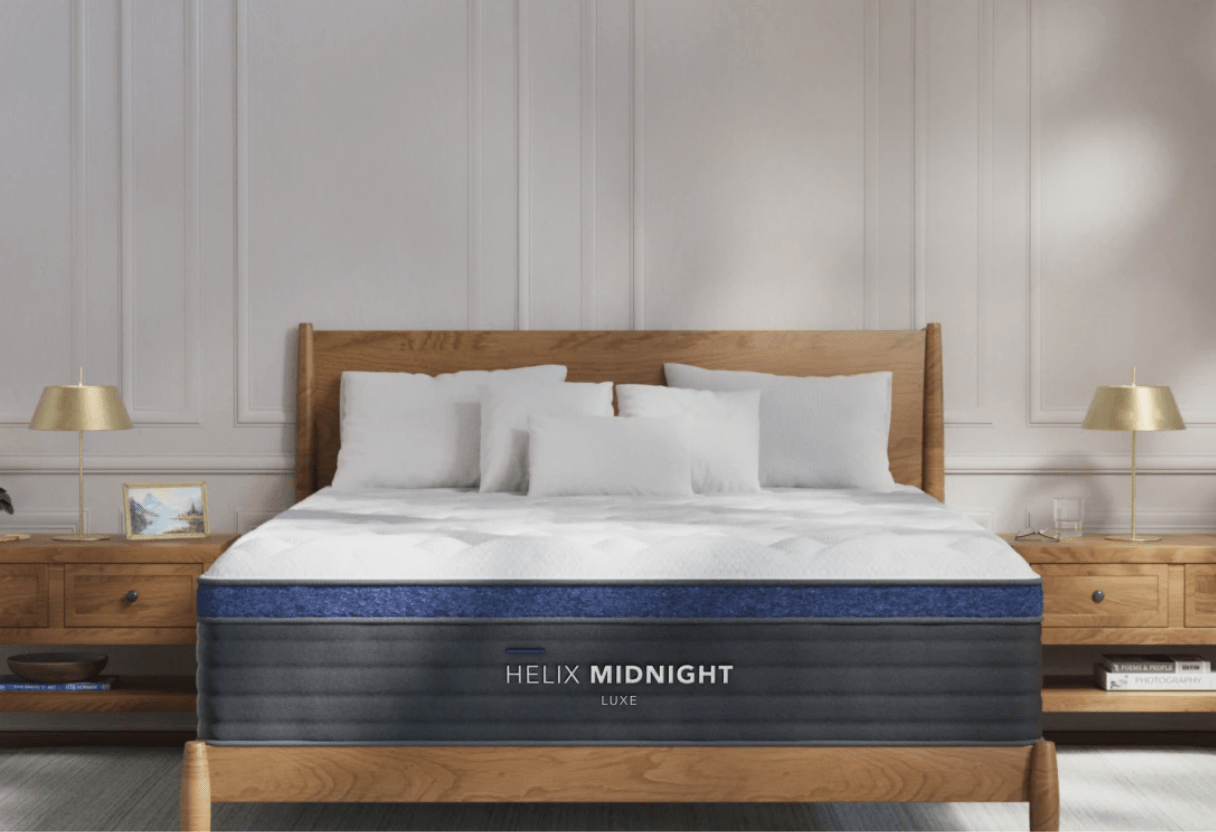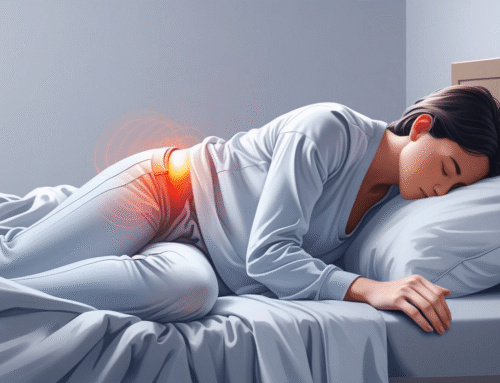Breathing techniques can be a simple yet powerful way to calm your mind and body, making it easier to drift off to sleep and enjoy better rest overall. By slowing your breath and triggering your body’s natural relaxation response, these exercises help to reduce stress and quiet those racing thoughts that often keep us awake at night.
Practicing specific breathing methods, like the 4-7-8 technique or diaphragmatic breathing, can quickly bring a sense of calm and set the stage for restful sleep. The best part? These techniques are easy to learn and can be done anywhere, which makes them a handy tool for anyone who struggles with sleep.
Knowing how to use breathing exercises effectively can help you create a consistent bedtime routine that supports deeper, more refreshing sleep. With a little practice, you might just find yourself falling asleep faster and waking up feeling more rested than ever.
Key Takeaways
- Breathing exercises activate the body’s relaxation system to support sleep.
- Simple, repeatable techniques can reduce stress and calm the mind.
- Regular practice helps improve sleep habits and overall restfulness.
- A comfortable, supportive mattress complements breathing techniques by creating an environment where relaxation is easier to achieve.
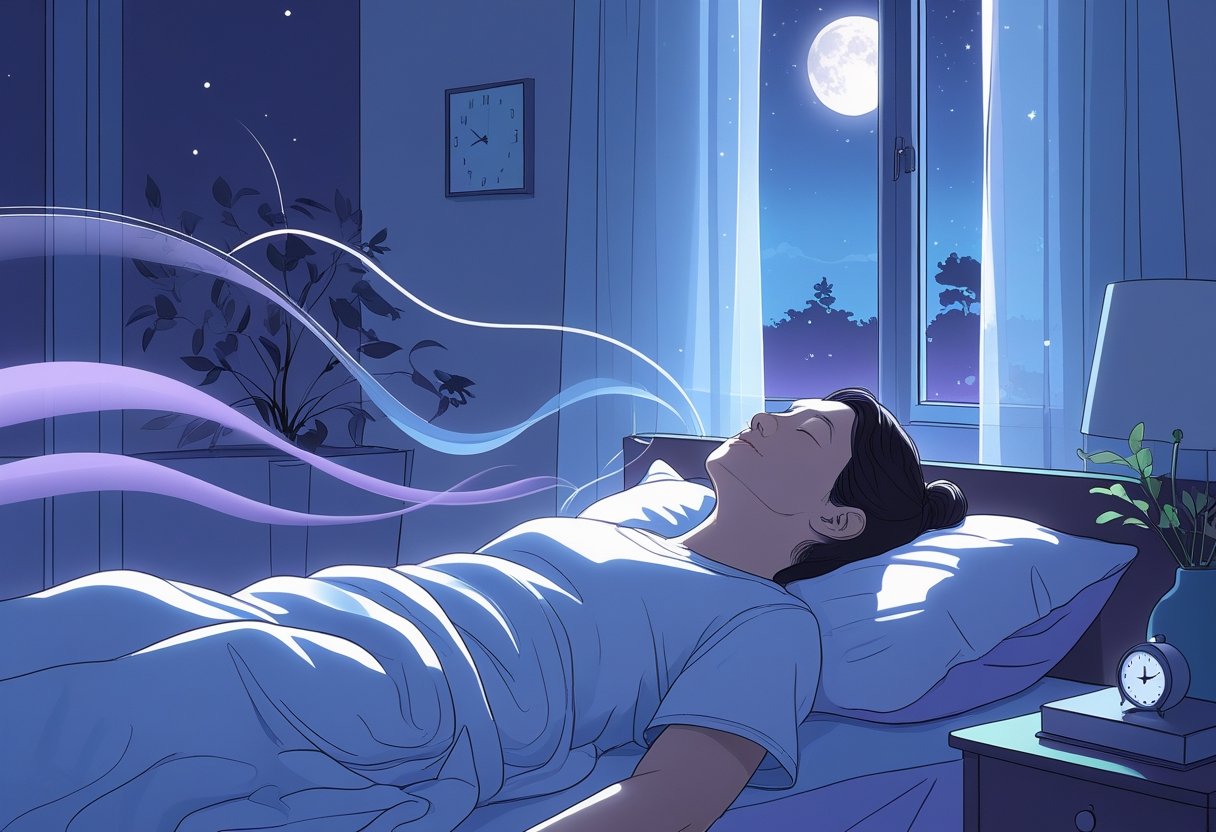
Understanding the Science of Sleep and Relaxation

Sleep relies on the body’s natural rhythms, which shift between deep rest and light awakening. Relaxation helps the mind and body ease into these rhythms, making it easier to fall asleep and stay asleep longer.
How Sleep Works
Sleep unfolds in stages, moving from light sleep to deep sleep and then to REM (rapid eye movement) sleep. Each stage plays a key role in restoring the body and mind. Deep sleep helps the body recover, while REM sleep supports memory and mood. The brain controls sleep by sending signals that balance wakefulness and rest. Melatonin, a hormone that’s released at night, helps regulate this cycle. When these signals are disrupted, it’s harder to fall asleep and sleep often gets interrupted.
To make falling asleep easier, it helps to stick to a regular schedule and avoid stimulants like caffeine before bed. Creating a cool, dark, and quiet environment also encourages sleep to come more naturally.
The Role of Relaxation in Sleep Quality
Relaxation techniques lower your heart rate and ease muscle tension, helping the body shift from alertness to rest. Methods like deep breathing and meditation reduce stress hormones and signal to the brain that it’s time to sleep. One effective method is the 4-7-8 breathing exercise. It involves inhaling for 4 counts, holding for 7, and exhaling slowly for 8. This breathing pattern slows the breath and calms the nervous system.
Practicing relaxation techniques consistently before bed can improve your sleep quality overall. It also helps manage anxiety or those racing thoughts that often make it hard to drift off. By slowing the breath, you signal the body to relax, making these strategies some of the best natural ways to fall asleep. For more on breathing to improve sleep, visit breathing techniques for better sleep.
What Are Breathing Techniques for Sleep?
Breathing techniques for sleep involve specific ways of controlling your breath to help your body relax and get ready for rest. These exercises change how air moves through your lungs and affect your nervous system. They can help reduce stress, slow your heart rate, and calm your mind.
How Breathing Affects the Body
Breathing controls how much oxygen you take in and how much carbon dioxide you release, both of which are essential for your body’s energy and balance. Slow, deep breathing sends a signal to your body to slow down, which helps lower stress hormones like cortisol. This also helps bring down your heart rate and blood pressure.
When people practice breathing exercises for sleep, they often use their diaphragm—breathing deeper into the belly rather than taking shallow breaths into the chest. This kind of breathing activates the parasympathetic nervous system, helping the body relax.
Techniques like box breathing or 4-7-8 breathing focus on timing the breath, making it slower and more controlled. This can ease physical tension and help muscles prepare for rest.
The Connection Between Breathing and Sleep
The way you breathe can affect how easily you fall and stay asleep. Shallow or rapid breathing can make the body tense and alert, which can block relaxation. Slow and steady breathing helps reduce anxiety and creates the right conditions for sleep.
Breathing exercises for sleep also encourage mindfulness and draw your focus away from racing thoughts. By following specific patterns, you guide your mind and body into a calm, peaceful state. Many experts recommend breathing techniques as a natural way to improve sleep without medication. These exercises can help with common sleep problems like insomnia by making it easier to transition into deep, restful sleep.
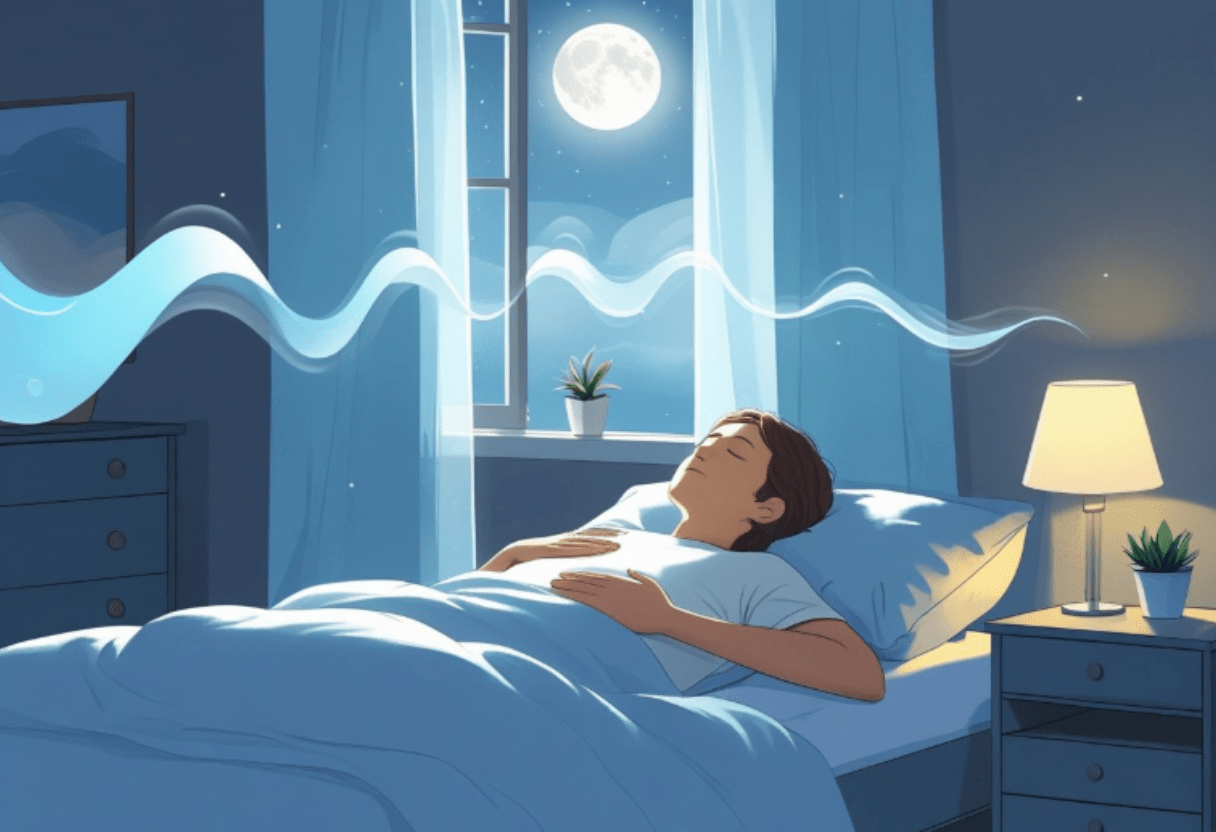
Fundamental Breathing Techniques for Better Sleep
Breathing exercises for sleep focus on slowing the breath, calming the mind, and relaxing the body. These techniques help ease stress and get the nervous system ready for rest. Practicing them regularly can make it easier to fall asleep quickly and improve the overall quality of sleep.
4-7-8 Breathing Method
The 4-7-8 breathing method is a popular way to settle the mind before bed. It involves gently inhaling through the nose for 4 seconds, holding the breath for 7 seconds, and exhaling fully through the mouth for 8 seconds. This pattern slows your breathing and reduces anxiety.
The longer exhale tells the nervous system it’s time to relax, helping to release tension. It’s easy to do anywhere and doesn’t require any special equipment. Practicing the 4-7-8 method a few times a day or right before bed can help you build a consistent routine that promotes quicker sleep onset.
Diaphragmatic Breathing
Diaphragmatic breathing, also known as belly breathing, helps you engage the diaphragm fully to take in more oxygen. You breathe in deeply through the nose, letting your stomach rise, then exhale slowly through pursed lips, letting the abdomen fall.
This method encourages slower, deeper breaths, which lower your heart rate and blood pressure. It also activates the parasympathetic nervous system, telling the body it’s time to relax. It might take a little practice to learn, but it can become a powerful tool for managing stress and sleep issues.
Box Breathing
Box breathing uses a steady rhythm to help control your breath and increase focus, calming a busy mind. It has four equal parts: inhale for 4 seconds, hold for 4 seconds, exhale for 4 seconds, and hold again for 4 seconds.
This technique helps maintain a steady balance between oxygen and carbon dioxide. It quickly reduces stress and quiets racing thoughts, making it easier to fall asleep. Box breathing is especially helpful for those who struggle with anxiety or restless minds at bedtime.

Guided Breathing Practices and Mindfulness

Focused breathing can calm the mind and relax the body, making it easier to unwind before bed. Different practices use breath to ease tension, slow the heart rate, and get the body ready for rest. These methods blend breath control with mental focus or muscle relaxation to support better sleep.
Progressive Muscle Relaxation
This technique pairs deep breathing with a systematic tensing and releasing of muscle groups. The person breathes in deeply, then tightens a specific muscle group for a few seconds. Afterward, they exhale slowly and fully relax that group. Starting from the feet and moving up to the face, this step-by-step process reduces physical stress. It also helps you become more aware of areas where tension often builds up unconsciously. This can help break the cycle of stress that gets in the way of sleep.
Using Progressive Muscle Relaxation (PMR) before bed can reduce physical restlessness and create a sense of calm. It’s a proven relaxation exercise that helps people who find it hard to unwind after a busy day.
Guided Meditation Breathing
In this technique, you follow recorded or live instructions that focus on your breathing and use mental imagery. The guide might prompt slow, even breaths along with calming visualizations, like picturing peaceful scenes. This practice boosts mindfulness by keeping your full attention on the breath, which helps reduce anxious or racing thoughts. It gradually shifts focus away from distractions and into a more relaxed state.
Guided meditation breathing is great for people who need help maintaining a steady breathing rhythm. It can act as a bridge between conscious effort and automatic calmness. Many apps now offer resources with different timings and styles to match individual needs.
Body Scan Techniques
Body scan practices involve focusing on different parts of the body in sequence, usually paired with slow, steady breathing. As you breathe evenly, you bring awareness to sensations in each area without judgment.
This mindful observation encourages you to notice and let go of tension stored in your muscles and joints. It builds a sense of presence and physical relaxation—both important for better sleep.
Practicing a full body scan before bed can help you identify stress points and strengthen the body’s natural relaxation response. The technique usually takes 10 to 20 minutes and fits well with other relaxation exercises.
Creating the right conditions and habits can make breathing exercises more effective when it’s time to fall asleep. Small but steady changes help both the body and mind prepare for rest. Timing and environment both play a big role in improving sleep quality.
Preparing Your Sleep Environment
A quiet, dark, and cool room helps signal to your body that it’s time to sleep. Removing distractions like phones or bright lights supports relaxation. Comfortable bedding and minimal noise also make it easier to focus on your breathing exercises.
Keeping your bedroom tidy and free from clutter can reduce mental stress. Some people find that adding soft background sounds, like white noise or gentle music, is helpful. The environment should feel safe and calming to encourage deep breathing and help you drift into sleep.
Establishing a Consistent Routine
Practicing breathing exercises at the same time each night trains your body to expect rest. Consistency helps trigger relaxation on cue. Pairing breathing techniques with other calming activities, like reading or stretching, can strengthen the signal that it’s time to wind down.
A simple routine might include 5 to 10 minutes of focused breathing right before turning off the lights. Using methods like diaphragmatic breathing or the 4-7-8 technique regularly over days or weeks can improve their effectiveness. Sticking with it is one of the best ways to fall asleep faster with breathing exercises.
When to Use Breathing Techniques
Breathing techniques work well right before bed or if you wake up during the night. Using these exercises when you feel restless can help reduce anxiety and calm the nervous system. They’re also useful when you’re struggling to shift from an active mind to sleep.
Some people find it helpful to practice breathing exercises after a stressful event near bedtime. Others use them as part of a wind-down ritual, letting the body know it’s time to switch into “rest and digest” mode. Regular use builds a stronger connection between breathing and falling asleep.
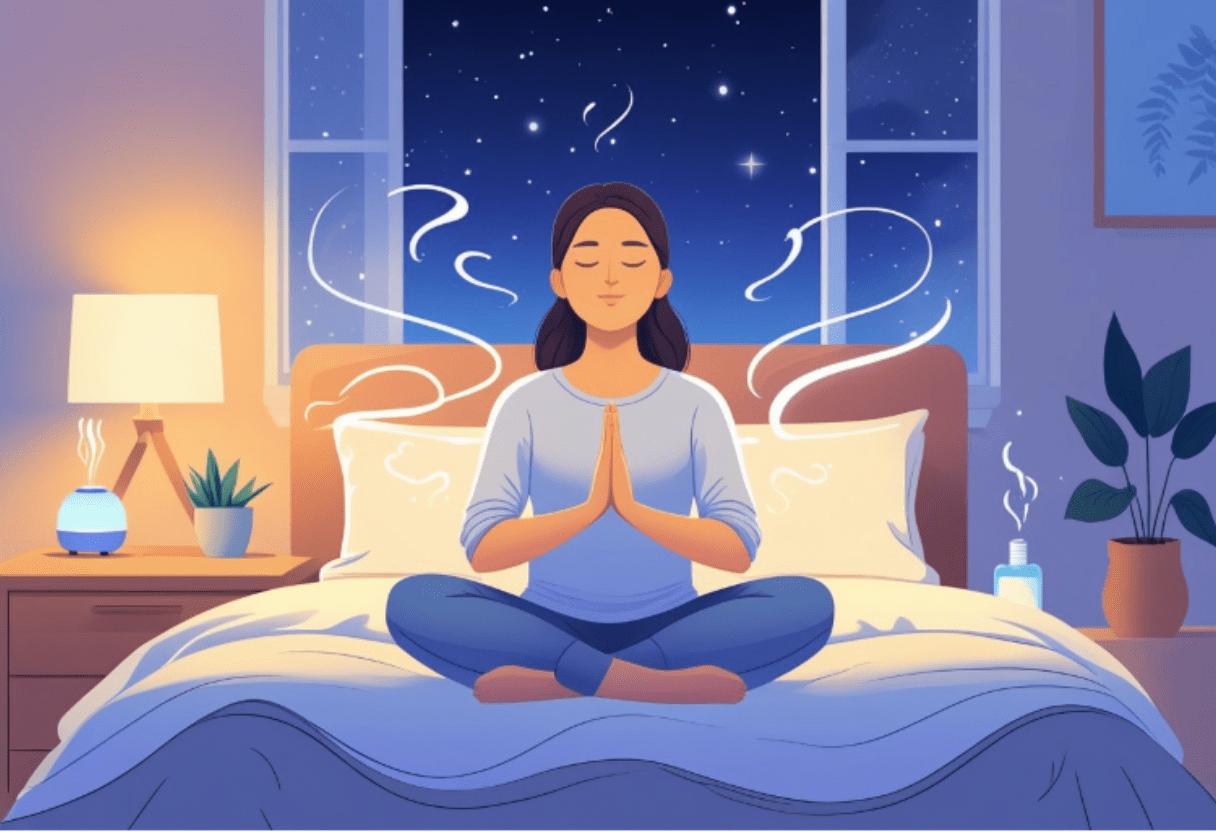
Tips and Common Mistakes When Practicing Breathing Techniques
Success with breathing exercises depends on consistent practice, using the right form, and adjusting methods to fit individual needs. Avoiding common mistakes and knowing how to fine-tune your technique can make it easier to fall asleep faster.
How to Maximize Effectiveness
Starting in a quiet, dimly lit space helps calm the mind for breathing exercises. Practicing every day for 5 to 10 minutes, especially before bed, builds habit and improves results. Using a slow, steady pace, like the 4-7-8 method, boosts relaxation by activating the parasympathetic nervous system.
It’s important to focus on deep, even breaths, making sure to breathe from the diaphragm, not the chest. Pairing breathing with other good sleep habits, like avoiding screens and caffeine before bed, helps you fall asleep faster. It also helps to find a comfortable position, like lying on your back, so you’re not distracted by any discomfort.
What to Avoid
Holding your breath too long or breathing too fast can cause dizziness or increase tension. It’s important not to force yourself to slow your breathing too much; forcing it can create stress instead of reducing it. Another common mistake is trying to multitask during practice, which takes away from the focus and calming benefits.
Avoid practicing only when you’re very tired or anxious because irregular practice can limit the benefits over time. Another pitfall is neglecting your posture; slouching or letting your head drop can reduce oxygen flow and make it harder to relax.
Adjusting Techniques for Personal Needs
Not all breathing methods work equally well for everyone. It’s helpful to try different rhythms, like box breathing or resonant breathing, to see what feels natural. Some people may find longer exhales more calming, while others might need shorter breath cycles at first.
People with breathing or heart conditions should talk to a doctor before trying advanced techniques. Adjusting the length and number of breaths each day based on comfort and progress is key to getting better. Personalizing the exercise makes it easier to stick with and more effective for falling asleep faster.
Exploring Additional Relaxation Methods for Sleep
Relaxation before bed can go beyond just breathing exercises. Integrating other gentle techniques helps prepare both the mind and body for restful sleep. Making adjustments to your environment and using calming sounds or scents can also support deeper relaxation.
Combining Breathing with Other Relaxation Exercises
Pairing breathing with simple physical exercises can make it easier to drift off to sleep. Stretching or gentle yoga helps release the muscle tension that builds up throughout the day. When combined with slow, deep breathing, these movements calm the nervous system.
For example, doing a few stretches while focusing on inhaling deeply through the nose and exhaling slowly through the mouth can soothe both body and mind. Progressive muscle relaxation, where you tense and then relax different muscle groups, also pairs well with controlled breathing. This combination helps reduce stress and primes the body for sleep.
These exercises help you become more aware of how your body feels and encourage relaxation. People learning how to unwind before bed often find this approach helpful because it tackles both mental and physical tension.
Listening to Calming Music
Calming music can help slow your heart rate and lower blood pressure, letting the body slip into a more relaxed state. Soft, instrumental tracks or nature sounds work best, as they avoid sudden changes that might disrupt sleep readiness. Using music alongside breathing exercises creates a peaceful atmosphere that supports relaxation. A sound machine or an app can offer consistent background noise to mask any disruptions.
Listening quietly for 20-30 minutes before lying down gives your brain time to shift from active thinking to a more restful state. This method is a common relaxation technique for sleep because it’s easy to use and accessible to many people.
Aromatherapy and Environment
Aromatherapy uses scents like lavender or chamomile to promote calm and reduce anxiety. You can diffuse these essential oils in the bedroom or apply them lightly to the skin. The scent signals the brain to relax, making it easier to drift off to sleep.
Creating a sleep-friendly environment also includes dim lighting, cool temperatures, and minimizing noise. A clean, clutter-free room helps reduce distractions that can make it harder to unwind.
Together, a calm environment and soothing aromas strengthen the effects of breathing and relaxation exercises. Adjusting these external factors often makes it easier to relax before bed and improves overall sleep quality.
Mattresses and Breathing Exercises for Sleep
Choosing the right mattress is key to supporting relaxation and making breathing exercises more effective at bedtime. A good mattress helps maintain a comfortable sleeping position, which allows the lungs to expand fully during deep breathing and promotes steady airflow. When the body is properly supported, it’s easier to focus on your breath and slip into a calm, relaxed state.
One excellent choice is the Helix Midnight Luxe mattress. Known for its plush comfort and excellent support, it cradles the body while keeping the spine aligned. Its advanced cooling technology also helps regulate body temperature, which is essential for relaxation and sleep readiness.
Paired with breathing exercises, this mattress can create an environment that encourages deep rest and easier sleep onset. Investing in a quality mattress like the Helix Midnight Luxe enhances the overall impact of your nightly relaxation routine and supports a more restorative night’s sleep.
